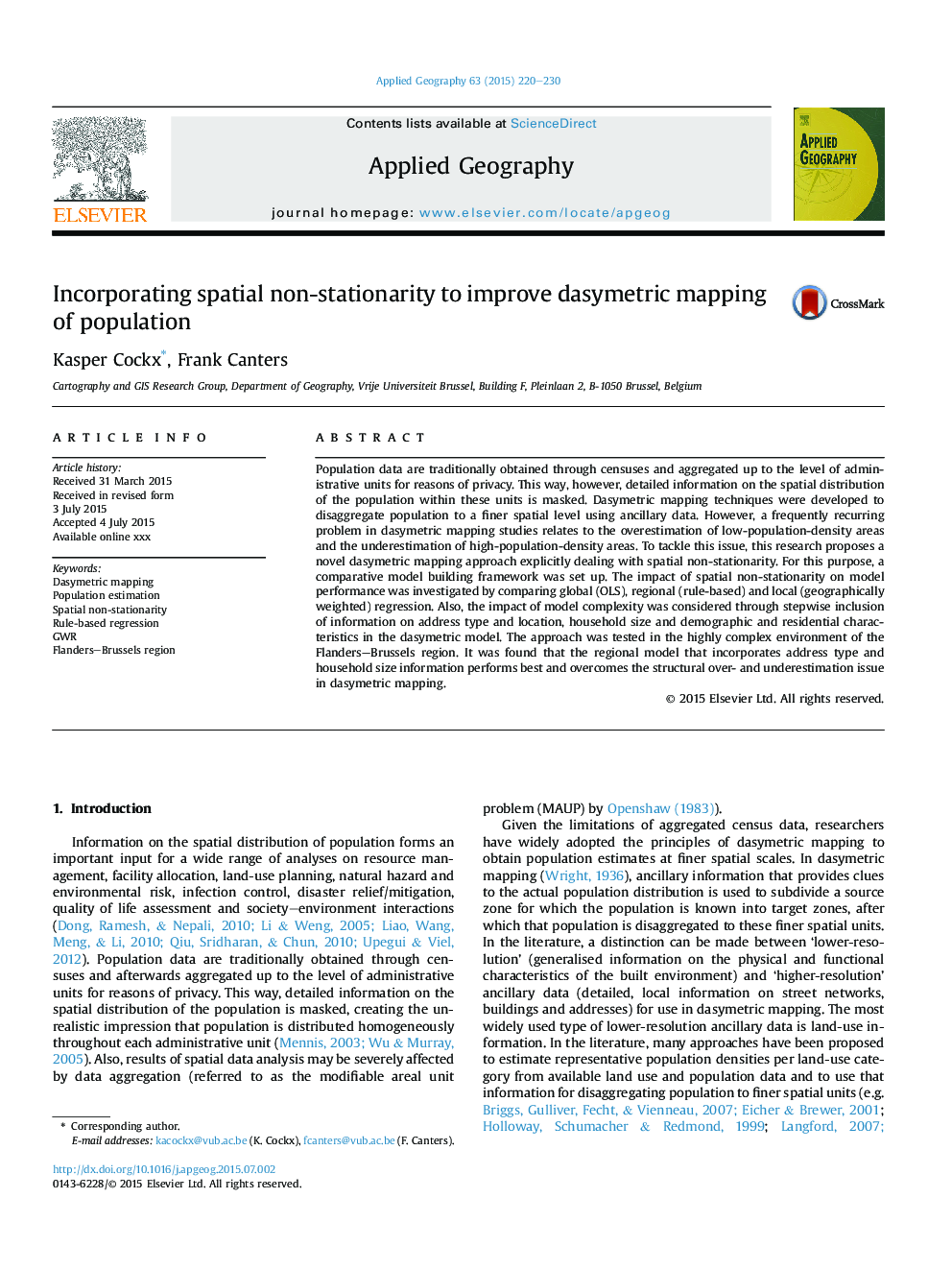| Article ID | Journal | Published Year | Pages | File Type |
|---|---|---|---|---|
| 6538460 | Applied Geography | 2015 | 11 Pages |
Abstract
Population data are traditionally obtained through censuses and aggregated up to the level of administrative units for reasons of privacy. This way, however, detailed information on the spatial distribution of the population within these units is masked. Dasymetric mapping techniques were developed to disaggregate population to a finer spatial level using ancillary data. However, a frequently recurring problem in dasymetric mapping studies relates to the overestimation of low-population-density areas and the underestimation of high-population-density areas. To tackle this issue, this research proposes a novel dasymetric mapping approach explicitly dealing with spatial non-stationarity. For this purpose, a comparative model building framework was set up. The impact of spatial non-stationarity on model performance was investigated by comparing global (OLS), regional (rule-based) and local (geographically weighted) regression. Also, the impact of model complexity was considered through stepwise inclusion of information on address type and location, household size and demographic and residential characteristics in the dasymetric model. The approach was tested in the highly complex environment of the Flanders-Brussels region. It was found that the regional model that incorporates address type and household size information performs best and overcomes the structural over- and underestimation issue in dasymetric mapping.
Related Topics
Life Sciences
Agricultural and Biological Sciences
Forestry
Authors
Kasper Cockx, Frank Canters,
